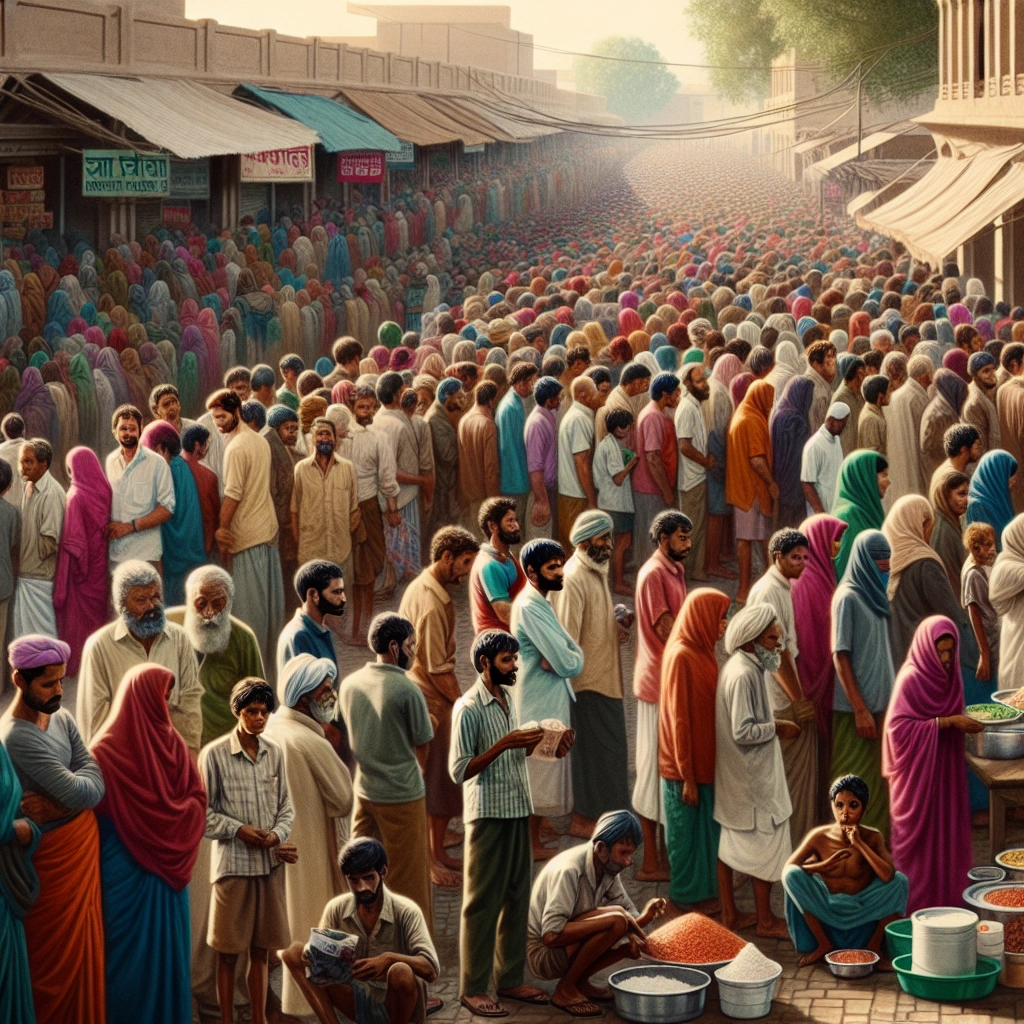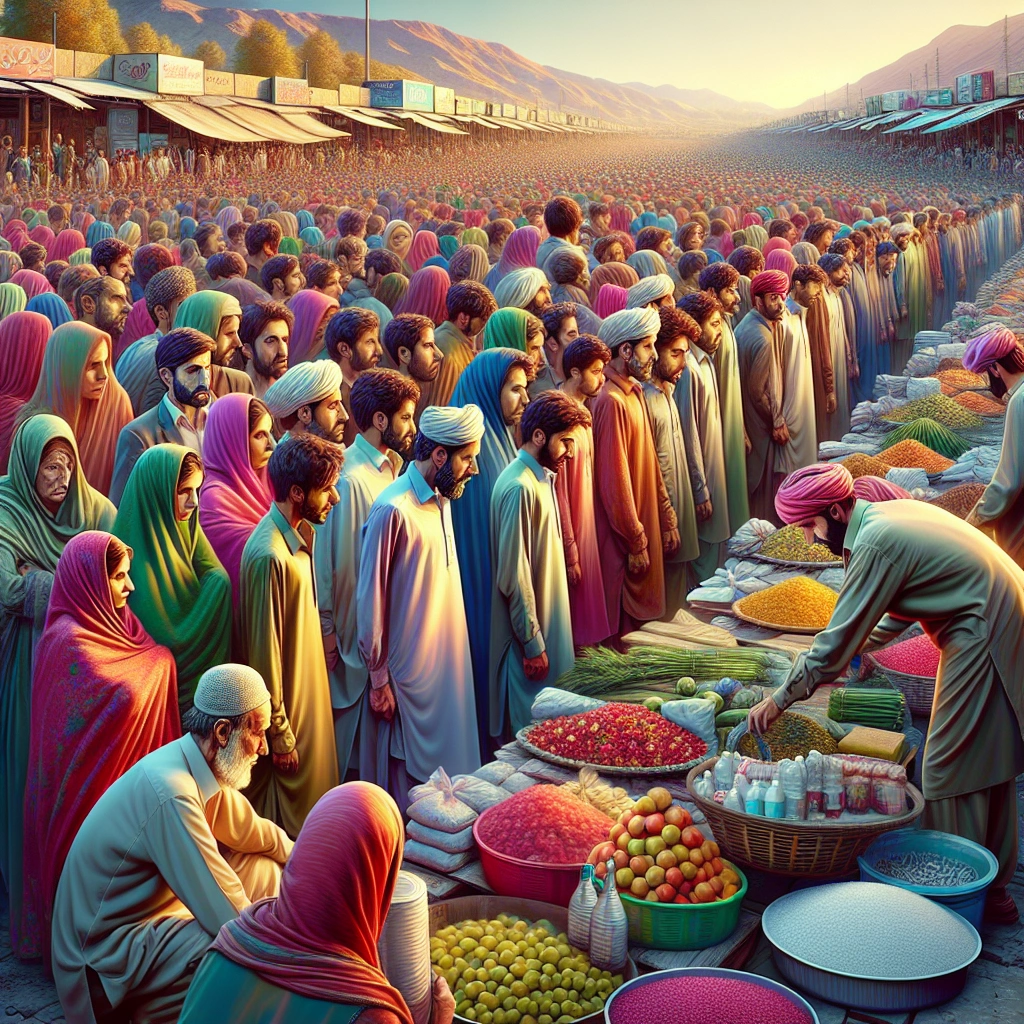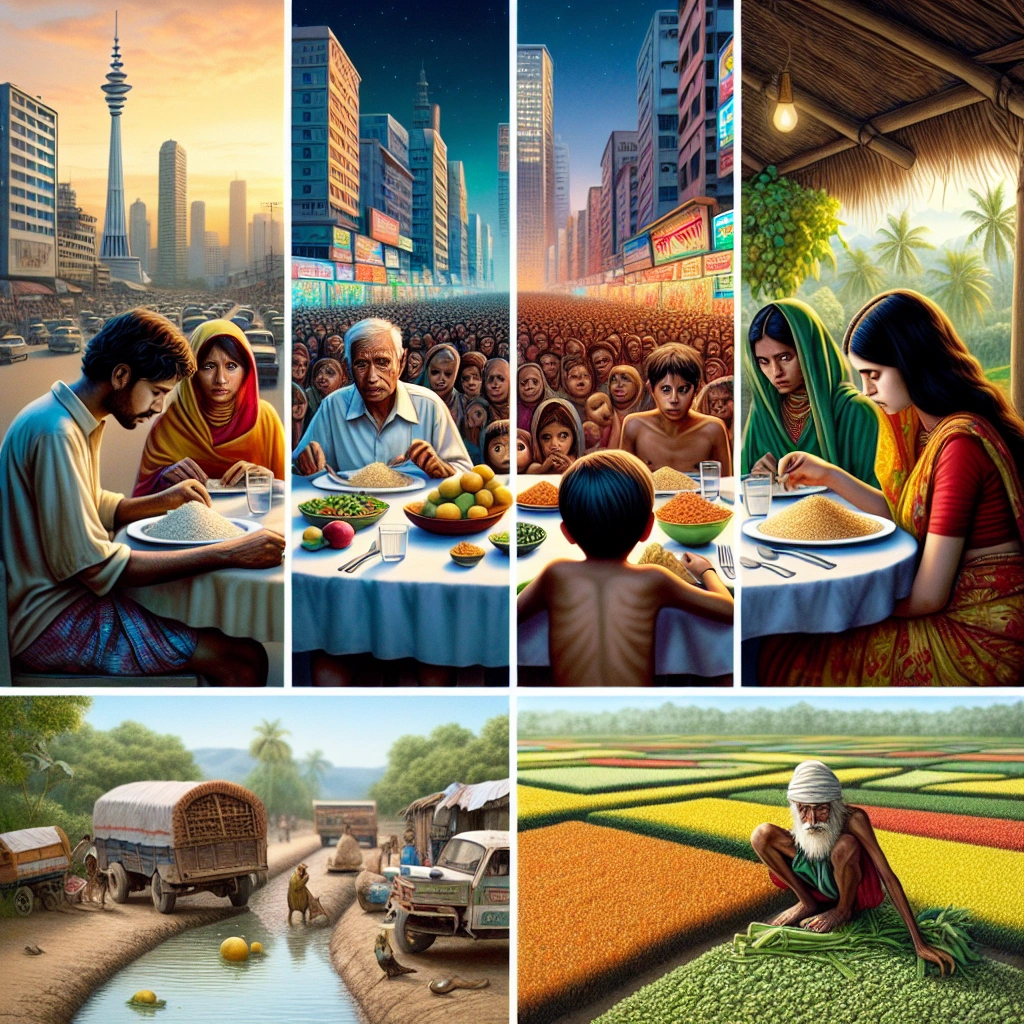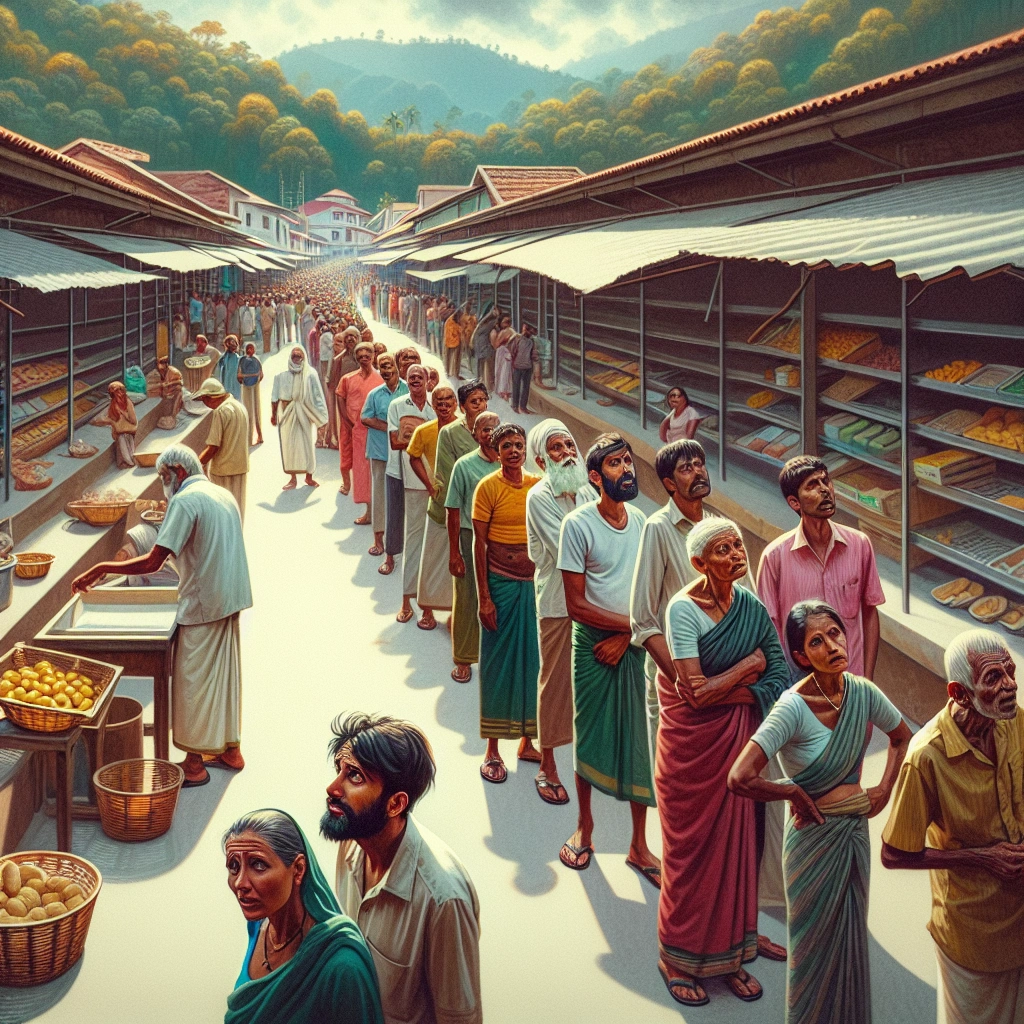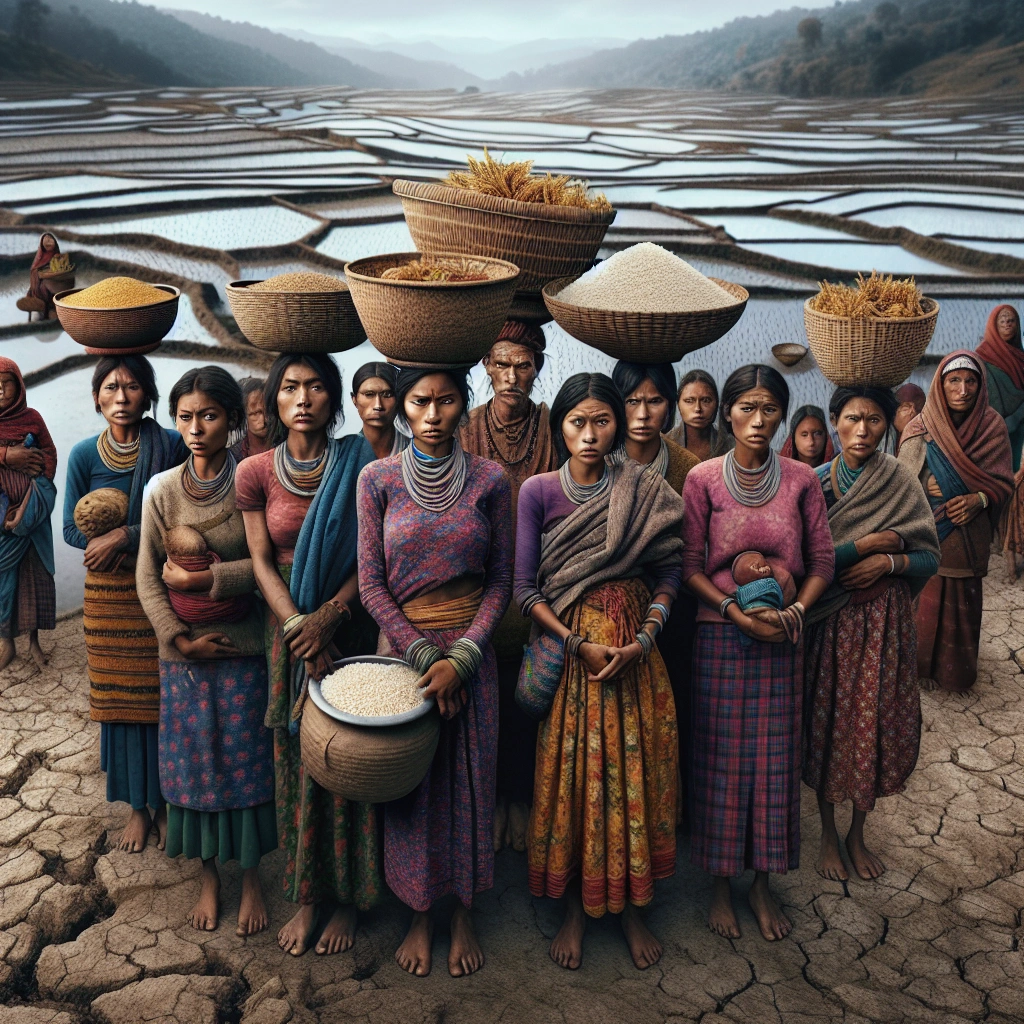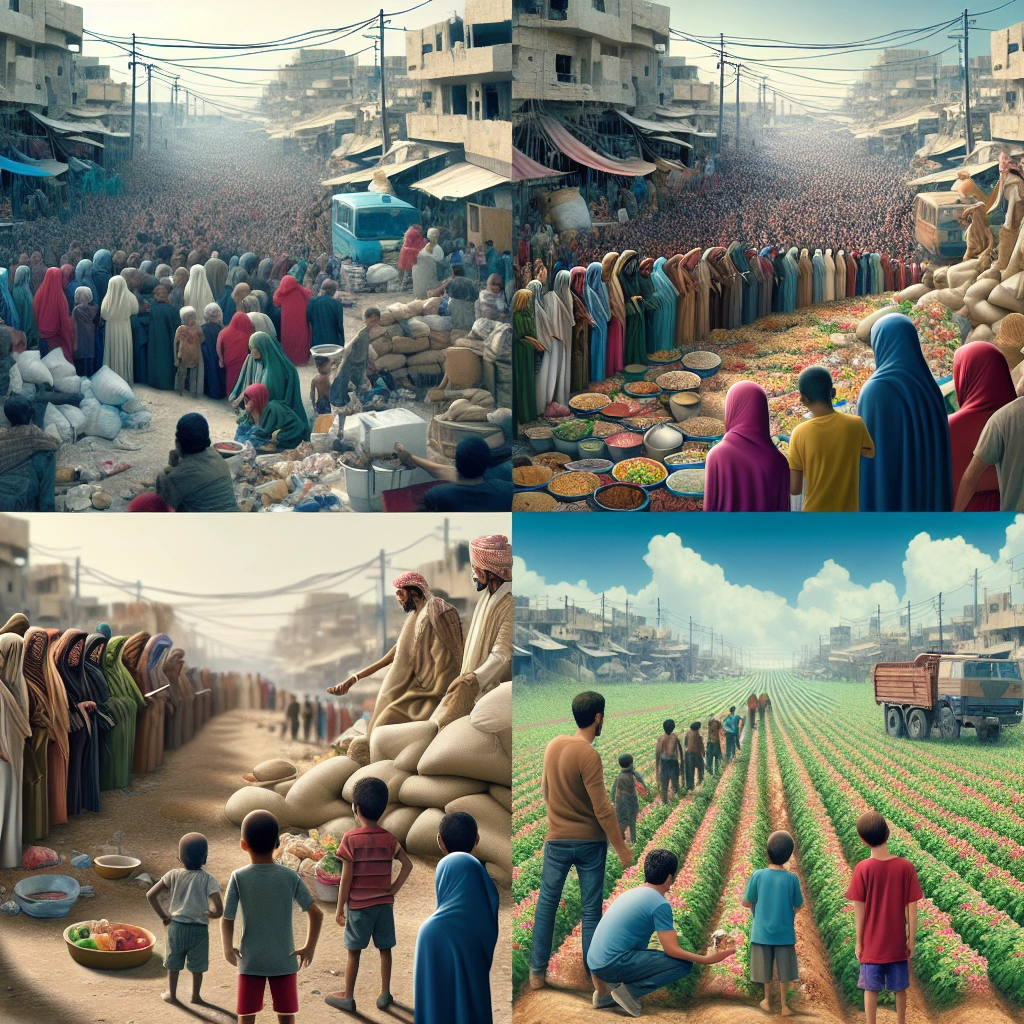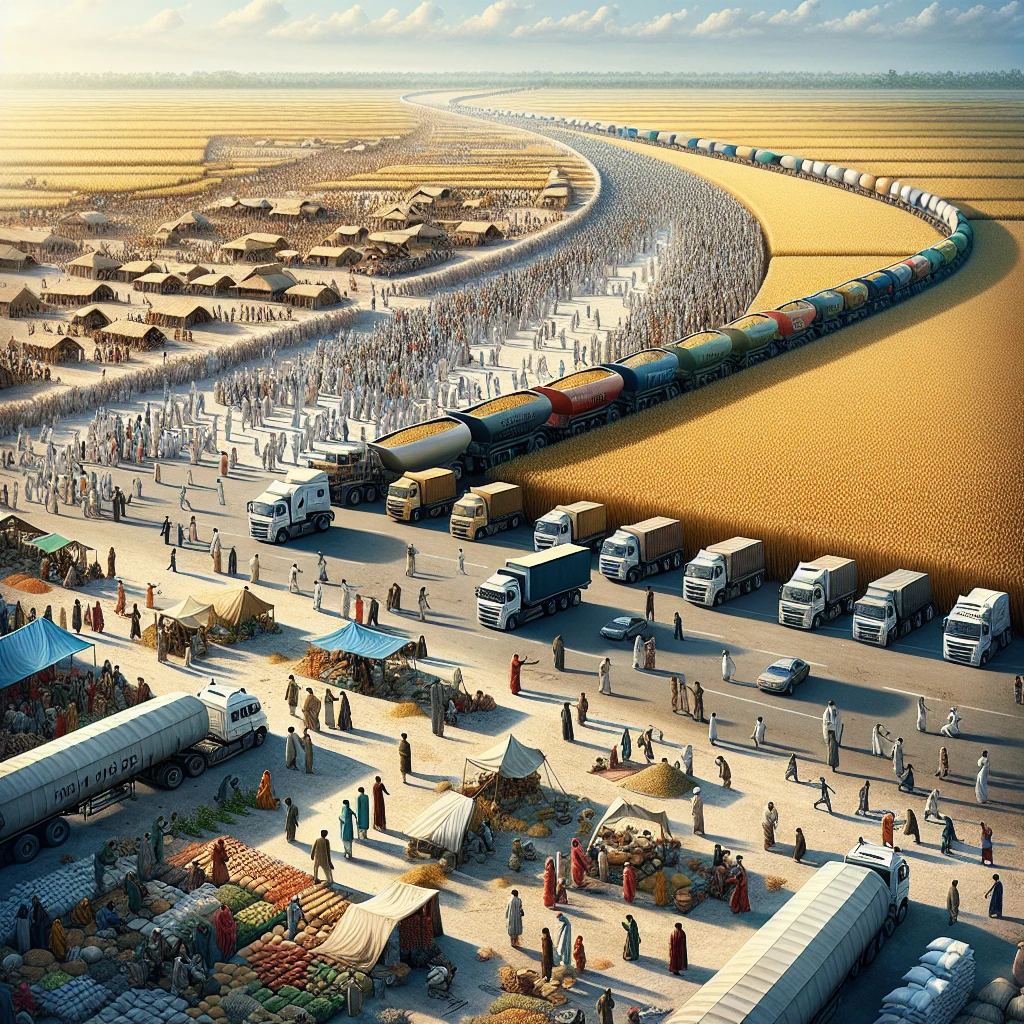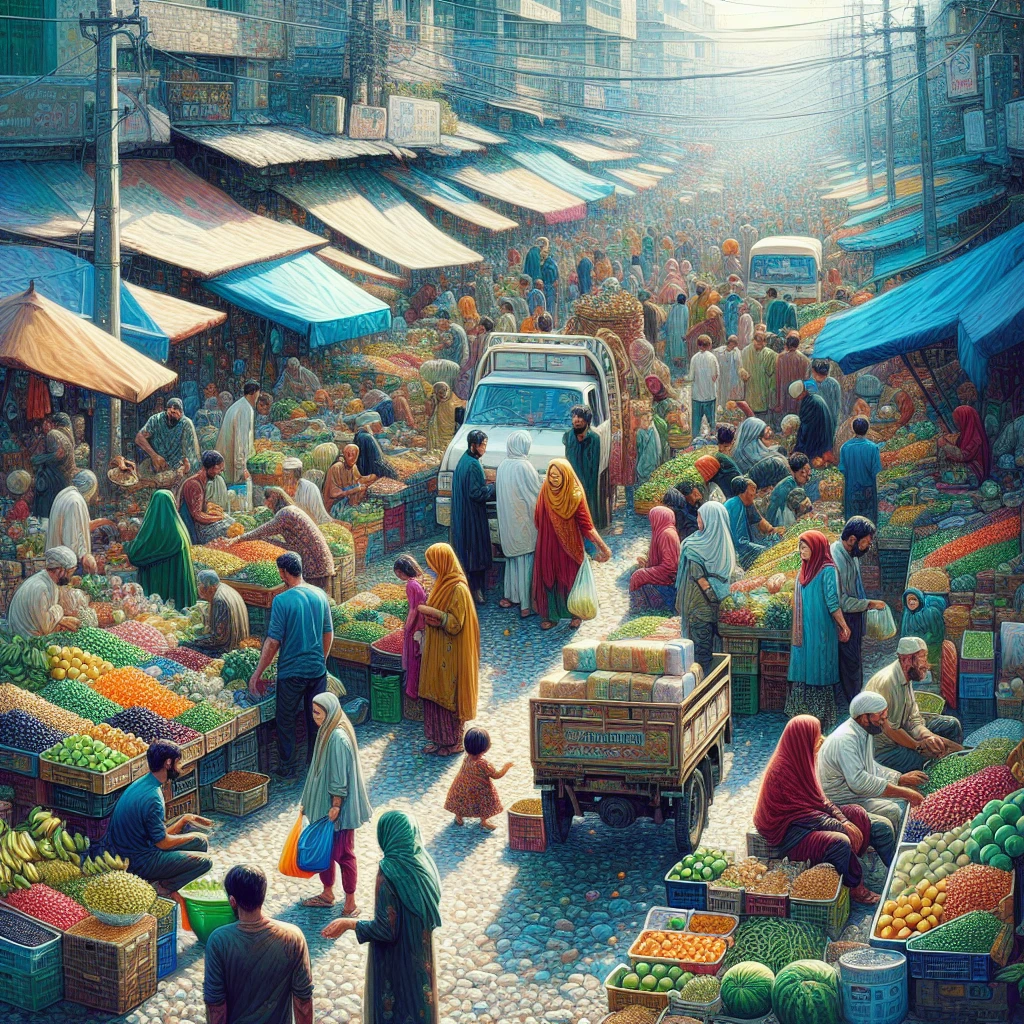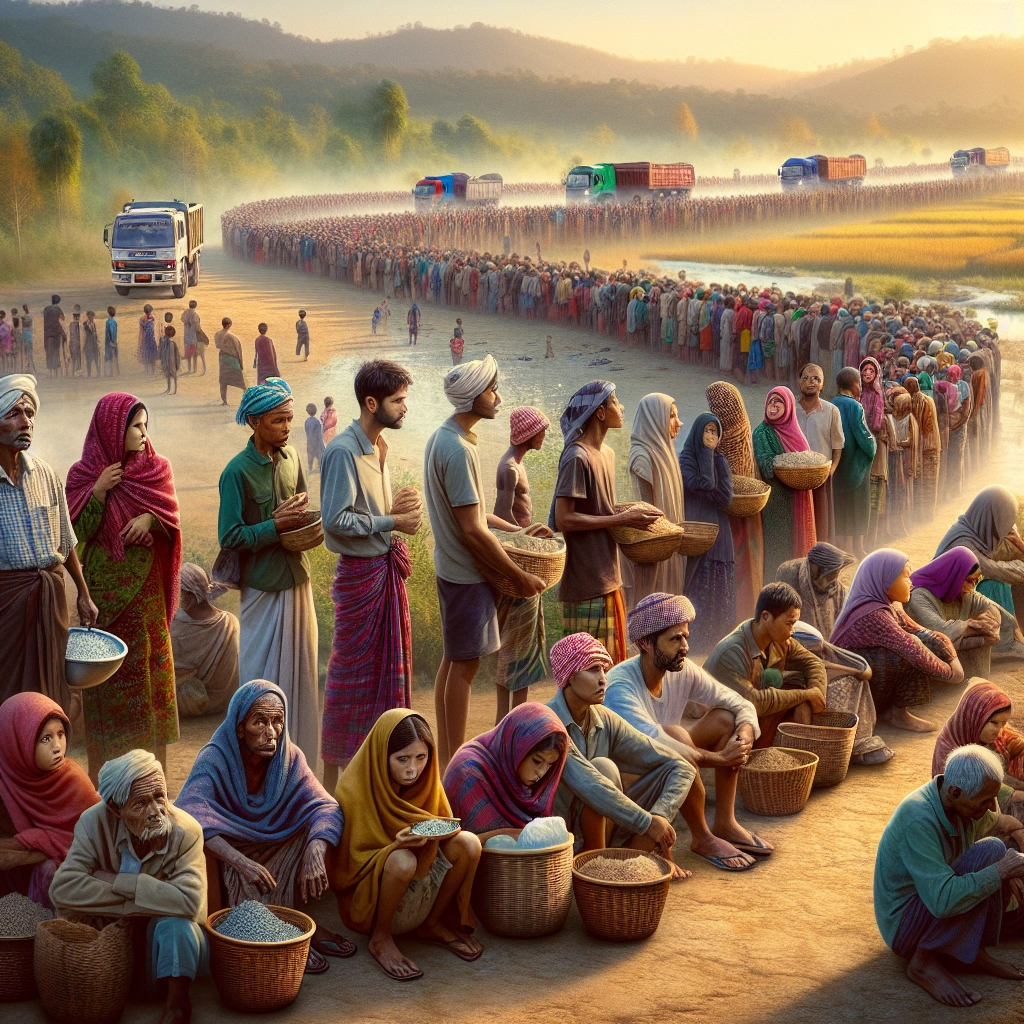

Food shortages in South Asia refer to the inadequate availability and access to food in countries such as India, Pakistan, Bangladesh, Nepal, and Sri Lanka.
It is important to address food shortages in South Asia because it impacts the health and well-being of millions of people in the region, leading to malnutrition, hunger, and poverty.
The likely contributors to increasing food insecurity in entire South Asia are the COVID-19 pandemic, the Russia-Ukraine War, natural disasters, energy crisis, and global rise in food prices.
The Impact of Food Shortages
Health consequences of food shortages
Food shortages have devastating health consequences, leading to a range of chronic conditions and infectious diseases. Adults living in food-insecure households are more prone to experiencing poor oral health, injuries, and mental health issues such as depression and anxiety disorders.
Furthermore, inadequate access to nutritious food is associated with several chronic health conditions, including heart disease, hypertension, and cognitive problems. Long-term effects may even lead to hypoglycemia, fatigue, irregular heartbeat, and dizziness, as well as broader ill effects on brain and organ functioning.
Economic impact of food shortages in South Asia
The economic impact of food shortages in South Asia is profound, with rising food prices contributing to increased insecurity. The World Bank Group reported a significant rise in domestic food price inflation, affecting a large percentage of low-income and middle-income countries.
Additionally, severe food insecurity affected approximately 19.4% of the population in South Asia, highlighting the critical economic repercussions of food shortages in the region.
| Aspect | Impact |
|---|---|
| Food Accessibility | Limited access to affordable, nutritious food |
| Economic Impact | Rising food prices and inflation |
| Population Affected | 19.4% severe food insecurity in South Asia |
This data underscores the urgent need for addressing food shortages in South Asia to mitigate both the health and economic consequences.
Factors Contributing to Food Shortages in South Asia
Climate change and its effects on agriculture
The rise in temperature due to climate change impacts cropping seasons in South Asia, leading to increased evapotranspiration and reduced crop yield. Heat stress, drought, flood, and cyclones have notably lowered rice production in the region, posing a significant threat to sustainable agriculture (Cai et al., 2016; Quyen et al., 2018; Tariq et al., 2018).
This has a direct impact on food availability and contributes to food shortages in South Asian countries.
Political instability and conflict
The prevalence of ethnic conflicts and border disputes in South Asia, such as the Chakma problem in Bangladesh and the conflict over Kashmir between India and Pakistan, significantly disrupt agricultural activities and impede food distribution systems. Political violence and localised mob activities further exacerbate food shortages, hindering food supply and exacerbating the crisis.
Population growth and food demand
South Asia is witnessing rapid population growth, which is projected to increase food demand by 40 percent by 2050. This soaring demand, coupled with climate-related agricultural challenges and political instability, creates an immense strain on the food supply chain, ultimately leading to food shortages across the region.
List of Countries in South Asia with Food Shortages
| Country | Severity of Food Shortages |
|---|---|
| India | High |
| Pakistan | Moderate |
| Bangladesh | Severe |
| Sri Lanka | Low |
| Nepal | High |
| Afghanistan | Critical |
| Maldives | Low |
| Bhutan | Moderate |
Each country in South Asia faces varying degrees of food shortages, with some experiencing severe conditions. The situation in India and Nepal is particularly high, while Bangladesh and Afghanistan struggle with critical shortages.
On the other hand, Sri Lanka and the Maldives have relatively low levels of food insecurity. It’s crucial for global organizations and governments to address these challenges and work towards ensuring food security for all individuals in these countries.
Case Study: India
Overview of food shortages in India
India, a land of incredible diversity, rich cultural heritage, and mouth-watering cuisine, has been grappling with food shortages in recent years. Approximately 307 million Indians experienced severe food insecurity, while 224 million individuals faced chronic hunger from 2019 to 2021. These staggering numbers highlight the pressing issue of food shortages in India, threatening the well-being of millions of people.
Government initiatives to address food shortages
In response to the alarming food scarcity, the Indian government has implemented several initiatives to address the issue. The National Nutrition Mission (NNM) and the National Food Security program are among the notable hunger-fighting endeavors aimed at ensuring access to nutritious food for all citizens.
These initiatives demonstrate the government’s commitment to eradicating food shortages and improving the overall food security situation in India.
Challenges in addressing food shortages in India
Despite government efforts, numerous challenges persist in addressing food shortages in India. Low agricultural productivity, water scarcity, inadequate infrastructure, and the impact of climate change pose significant hurdles to ensuring food security for the growing population.
Moreover, factors such as illiteracy, gender bias, unemployment, and poor environmental conditions further exacerbate the complexities of addressing food shortages in India.
| Challenges Faced in Addressing Food Shortages in India |
|---|
| Low agricultural productivity |
| Water scarcity |
| Inadequate infrastructure |
| Impact of climate change |
| Illiteracy |
| Gender bias |
| Unemployment |
| Poor environmental conditions |
The multifaceted nature of these challenges necessitates holistic strategies and concerted efforts to alleviate food shortages and achieve sustainable food security for India’s populace.
Case Study: Pakistan
Overview of food shortages in Pakistan
Pakistan is facing a growing food crisis attributed to climate change, inflation, inadequate agricultural productivity, unstable political arrangements, and corruption. The insufficient purchasing power and limited access to food supplies among the poor exacerbate the issue of food insecurity.
The country has also grappled with extreme weather conditions and disasters, further contributing to the challenge of food shortages.
Efforts to mitigate food shortages in Pakistan
In response to the food crisis, the Pakistani government has requested rapid expansion of food assistance activities from the World Food Programme (WFP) to support those affected by floods. This demonstrates a proactive step towards addressing immediate food scarcity and providing relief to the affected population.
Additionally, efforts to tackle the root causes, such as enhancing agricultural productivity, implementing stable political measures, and combating corruption, are crucial in mitigating food shortages.
Future implications for Pakistan’s food security
The future implications for Pakistan’s food security are deeply intertwined with addressing the underlying issues of agricultural productivity, political stability, and corruption. Climate change adaptation strategies and long-term food security policies are essential to prevent future food crises.
Collaborative efforts between the government, international organizations, and local communities will be vital in ensuring sustainable food security for the nation’s future.
Case Study: Bangladesh
Overview of food shortages in Bangladesh
Bangladesh has made significant economic strides, yet 40 million people still face food insecurity, with 11 million experiencing acute hunger, exacerbated by climate vulnerabilities and poverty. The UN has reported that 32% of Bangladeshis live below the national poverty line, amplifying the nation’s food scarcity struggles.
Solutions to improve food security in Bangladesh
To address food insecurity, Bangladesh is focusing on domestic food production boost, enhanced household income access, and fortified social safety net programs. Additionally, initiatives promoting organic and balanced fertilizers, free food distribution, food-for-work programs, and open market sell programs have been pivotal in ensuring food security.
Challenges in ensuring food access in Bangladesh
Concerted efforts are required to mitigate food scarcity challenges in Bangladesh. Sustaining food security amidst the pandemic-induced pressures on food production and addressing issues such as water scarcity, poor hygiene, sanitation, and malnutrition pose significant hurdles.
| Challenge | Description |
|---|---|
| Poverty | 32% below national poverty line |
| Climate Vulnerabilities | Prone to climate shocks due to low elevation and extensive watercourses |
| Food Scarcity Programs | Measures like free food distribution and food-for-work programs |
This is just a snippet from a comprehensive blog post about Bangladesh’s food shortages and the initiatives undertaken to combat them.
Case Study: Sri Lanka
Analysis of food shortages in Sri Lanka
The analysis of food shortages in Sri Lanka reveals a significant reduction in agricultural production and rising prices of fuel and basic food items, leading to food unaffordability for a segment of the population. This has resulted in major disruptions to the production of paddy rice, the main food staple, further exacerbating the crisis. The country is grappling with a looming food emergency as the root causes of these crises are yet to be effectively addressed. The food crisis in Sri Lanka is a critical issue that demands immediate attention and strategic intervention to prevent widespread hunger.
Government response to food insecurity
The Sri Lankan government has acknowledged the severity of the food crisis and has forecasted impending food shortages. Its response includes measures to address the root causes of the crisis, such as the globalisation of food production and distribution systems, which have significantly impacted the country’s food security. Efforts to stabilize food prices, increase agricultural production, and ensure equitable food distribution are essential to mitigate the impact of the crisis.
Role of international organizations in supporting Sri Lanka’s food security
International organizations, such as the World Food Programme, have played a crucial role in supporting Sri Lanka’s food security. Their initiatives include joining the WFP-led global school meals coalition and implementing programs to improve food security across all provinces. Additionally, the Food and Agriculture Organization of the United Nations has been leading international efforts to defeat hunger by modernizing and strengthening agricultural practices in Sri Lanka. Their support is vital in addressing the prevailing food insecurity and fostering sustainable food production and distribution systems in the country.
I hope these responses are engaging and informative!
Case Study: Nepal
Impact of food shortages in Nepal
The impact of food shortages in Nepal is significant, affecting approximately 4.6 million people who struggle with food insecurity. The country’s vulnerability to high food prices, especially in remote mountain areas, exacerbates the issue of food insecurity.
This situation has led to profound consequences, including a rise in malnutrition among Nepali children, with approximately 36 percent of children under 5 being stunted, 27 percent underweight, and 10 percent suffering from acute malnutrition, known as wasting. The 2015 earthquake also exacerbated the food shortage problem, leading to approximately 9,000 deaths, 23,000 injuries, and nearly US$7 billion in economic damage.
Efforts to improve food access in Nepal
In response to the food shortage challenges, various efforts have been implemented to improve food access in Nepal. For instance, the Nepali government has introduced nutrition as a priority agenda, emphasizing nutrition-sensitive interventions targeted at families and communities.
Additionally, USAID’s Office of Food for Peace (FFP) supports non-governmental organizations in managing development activities to enhance food security, while the World Food Programme (WFP) has been working extensively in Nepal to address food insecurity. These efforts aim to ensure that affected populations have immediate access to adequate food and nutrition, particularly during disasters and other shocks.
Future strategies for addressing food shortages in Nepal
Looking ahead, future strategies for addressing food shortages in Nepal should prioritize the improvement of education and nutrition outcomes for school-age children and adolescents, as well as nutritionally deprived groups. These strategies should also focus on providing greater access to affordable, nutritious, and safe diets, including through social protection programs.
Policies and programs informed by findings from studies and reviews will be essential to effectively address Nepal’s current and future nutritional needs, ensuring that the most vulnerable populations receive necessary support.
| Organization | Efforts |
|---|---|
| Nepali Government | Introduced nutrition as a priority agenda |
| USAID’s Office of Food for Peace | Supports NGOs in managing development activities |
| World Food Programme (WFP) | Working extensively to address food insecurity |
Completing these future strategies will require alignment with key plans and frameworks, such as the United Nations development assistance framework for Nepal, agricultural development strategies, and national action plans for zero hunger.
Ivanka, real hummus from India, it’s unbelievable. Unbelievably good. And when I say good, I mean, like, G-O-O-D. Let’s make our country’s nutrition and food access as good as that hummus.
Case Study: Afghanistan
Examination of food shortages in Afghanistan
Since the Taliban takeover, Afghanistan has faced severe food shortages, with over 90% of the population experiencing some form of food insecurity. This crisis has been exacerbated by factors such as conflict, the COVID-19 pandemic, and economic instability.
The situation has led to a significant percentage of households skipping meals or entire days without adequate nutrition. Reports from the United Nations and other organizations paint a vivid picture of the dire food shortage in the country.
Humanitarian aid efforts to alleviate food insecurity
In response to the crisis, international organizations, including the World Food Programme (WFP) and the United States Agency for International Development’s Office of Food for Peace (USAID FFP), have been at the forefront of providing emergency food assistance to the vulnerable population in Afghanistan. The aid includes in-kind food support and cash transfers to combat the widespread food insecurity resulting from conflict and natural disasters.
The efforts also focus on enhancing food security among impacted communities.
Long-term solutions for food security in Afghanistan
To address the long-term food security challenges in Afghanistan, sustainable solutions are essential. Efforts to promote economic stability, agricultural development, and resilience-building within local communities are crucial for ensuring lasting food security.
Additionally, the international community must work towards removing bureaucratic obstacles and refraining from politicizing aid to effectively combat the humanitarian crisis in Afghanistan.
| Country | Population Affected | Main Causes of Food Shortages |
|---|---|---|
| Afghanistan | 15.3 million | Conflict, COVID-19, Economy |
| Other South Asian Countries | Data Not Available | Various |
Let’s make Afghanistan great again and ensure that no citizen goes hungry.
Case Study: Maldives
Impact of food shortages in the Maldives
The impact of food shortages in the Maldives has been significant, with over 90% of the required food being imported. This heavy reliance on imports has created vulnerabilities, especially during global food shortages and price hikes.
The limited availability of arable land and geographic dispersion of the islands further exacerbate the situation, making the Maldives highly susceptible to food insecurity.
Measures to ensure food access in the Maldives
To ensure food access in the Maldives, efforts have been made to address the dependency on food imports. The country has focused on developing strategies for sustainable agriculture and fisheries to enhance self-sufficiency.
Additionally, the government has implemented policies to promote food security, such as the National Food Safety Policy and the Maldives National Food Security Strategy. These initiatives aim to strengthen food production and safety standards while also reducing reliance on food imports.
Sustainability efforts to address food shortages in the Maldives
Sustainability efforts to address food shortages in the Maldives revolve around building resilience and long-term solutions. The nation has prioritized sustainable development goals, emphasizing the need for self-sufficiency in food production.
Initiatives targeting environmental health and climate resilience are also being undertaken, as seen in the Maldives’ commitment to combating climate change and diversifying economic opportunities beyond tourism and fisheries.
Case Study: Bhutan
Analysis of food shortages in Bhutan
Bhutan faces food shortages primarily due to its mountainous terrain, limited arable land, and heavy reliance on food imports, covering about 50% of its food needs. Rising global grain shortages and fuel import costs have resulted in a spike in domestic food prices, posing a risk of scarcity, especially in rural areas.
Furthermore, unbalanced diets and lifestyle changes contribute to new challenges, impacting the country’s food security.
Government initiatives to promote food security
The government of Bhutan has taken significant steps to address food security. Initiatives include the implementation of the Food Security and Agricultural Productivity Project (FSAPP) in collaboration with international organizations.
Together, they aim to enhance agricultural productivity, promote local food demand, and refine post-harvest management. Additionally, efforts are focused on boosting the availability, accessibility, and consumption of fortified foods, especially in the national school nutrition program.
Challenges in achieving food access in Bhutan
Challenges in achieving food access in Bhutan stem from its predominantly agriculture-based society. Although the country has witnessed remarkable poverty reduction, it still relies heavily on agriculture, with the majority of the population depending on it for their livelihoods.
Climate change, limited arable land, and lifestyle shifts create barriers to reaching the Sustainable Development Goal of Zero Hunger, necessitating continuous efforts and innovation in the agricultural sector.
| Initiatives | Objectives |
|---|---|
| Food Security and Agricultural Productivity Project | Enhance agricultural productivity and post-harvest management |
| Fortified foods promotion | Boost the availability and consumption of fortified foods |
| National school nutrition program | Improve the health and diet of children through school menus |
Bhutan’s journey to address food shortages involves a multi-faceted approach, including agricultural projects, fortification programs, and education initiatives. While constraints persist, the government’s proactive measures and partnerships with international organizations signal a commitment to enhancing food security and nutrition across the nation.
International Efforts to Address Food Shortages in South Asia
Role of international organizations in supporting food security
As we focus on the critical issue of food shortages in South Asia, it’s important to recognize the pivotal role played by international organizations in supporting food security in the region. Organizations such as the World Food Programme (WFP), South Asia Food and Nutrition Security Initiative (SAFANSI) funded by the United Kingdom’s Department for International Development, and the European Commission have been at the forefront of addressing food shortages and promoting sustainable food security measures.
Through their collaborative efforts and funding, these organizations have implemented various initiatives aimed at providing essential nutrition and sustenance to the affected regions in South Asia. Their interventions have been instrumental in combating food insecurity and fostering long-term resilience in the face of such challenges.
Collaborative efforts to address food shortages in South Asia
In addressing food shortages in South Asia, collaborative efforts have been essential in driving impactful and sustainable solutions. The World Bank and other development partners, through SAFANSI, have been instrumental in providing crucial support in the form of targeted rural livelihoods projects, effectively addressing food and nutrition insecurity in the region.
Additionally, the Association of Southeast Asian Nations (ASEAN) has been proactive in recognizing and addressing food crises, with an emphasis on progress, challenges, and future measures to enhance food security. These collaborative endeavors have significantly contributed to mitigating the adverse effects of food shortages and promoting sustainable food security measures across South Asia.
Future trends and challenges in addressing food shortages
Looking ahead, it is imperative for us to acknowledge the future trends and challenges in addressing food shortages in South Asia. As we move forward, the importance of leveraging agrifood tech and sustainable agricultural practices in Southeast Asia cannot be overstated.
The region’s growing urbanization and economic prosperity further emphasize the need for addressing the impact of the climate crisis on food security. Additionally, recognizing and tackling global food crises and providing innovative strategies, such as the World Bank’s new approach for tackling food and nutrition security crises, will be crucial in shaping the future of food security in South Asia.
Addressing rising food insecurity with domestic food price inflation remaining high presents a pressing challenge that demands proactive and strategic interventions to ensure sustainable food security in the region.
| Country | Food Shortage Status |
|---|---|
| India | Moderate |
| Bangladesh | Severe |
| Pakistan | High |
| Sri Lanka | Moderate |
| Nepal | Severe |
| Afghanistan | Critical |
| Bhutan | Low |
Recommended Amazon Products for Addressing Food Shortages in South Asia
Here’s a curated list of products that can help address food shortages in South Asia. These recommendations are based on functionality, price, and reviews.
Portable Water Filter
The LifeStraw Personal Water Filter is an essential tool for individuals in areas with water scarcity, allowing them to filter water from any source. This reliable and highly-rated product is essential for ensuring access to clean drinking water during food shortages. You can find the LifeStraw Personal Water Filter on Amazon here: LifeStraw Personal Water Filter.


Solar-Powered Flashlight
The NPET T09 Solar Flashlight is a versatile solution for areas with limited access to electricity. This waterproof and long-lasting flashlight provides a reliable source of light without the need for batteries, making it a valuable asset during food shortages. You can find the NPET T09 Solar Flashlight on Amazon here: NPET T09 Solar Flashlight.


Non-perishable Food Supply
The Augason Farms 30-Day Emergency Food Supply is designed to provide long-term food security in times of crisis. This kit includes a variety of non-perishable food items with a shelf life of up to 30 years, ensuring access to nutritious meals during food shortages. You can find the Augason Farms 30-Day Emergency Food Supply on Amazon here: Augason Farms 30-Day Emergency Food Supply.


Hand-Crank Radio
The RunningSnail Emergency Hand Crank Radio offers multiple features including a flashlight, SOS alarm, and smartphone charging, making it an essential communication and emergency tool during food shortages. This compact and durable device is highly recommended for its functionality and reliable performance. You can find the RunningSnail Emergency Hand Crank Radio on Amazon here: RunningSnail Emergency Hand Crank Radio.


Top Recommended Product for Addressing Food Shortages in South Asia
If you’re looking for the best solution for addressing food shortages in South Asia, we highly recommend the LifeStraw Personal Water Filter. Here’s why:
| Pros | Cons |
|---|---|
| Filters water from any source | May require frequent cleaning |
| Long-lasting and durable | Limited capacity for filtering large quantities of water |
| Highly portable and easy to use | Not suitable for purifying salt water |
Ready to improve access to clean water during food shortages in South Asia? Check out the LifeStraw Personal Water Filter today for the best results!


Conclusion
South Asia is facing significant food shortages, with several countries being particularly affected. India, as one of the most populous countries in the world, has struggled with food insecurity, especially among marginalized communities.
Bangladesh, with its dense population and vulnerability to natural disasters, also experiences food shortages, particularly in rural areas where access to nutritious food is limited.
Furthermore, Afghanistan, a country plagued by conflict and political instability, has been grappling with food shortages, with millions of people facing severe hunger. These countries in South Asia are in urgent need of support and intervention to address the underlying causes of food insecurity and ensure that all individuals have access to an adequate and reliable food supply.
It is crucial for the international community to prioritize efforts to alleviate food shortages in these countries and work towards sustainable solutions that can improve food security for all.



